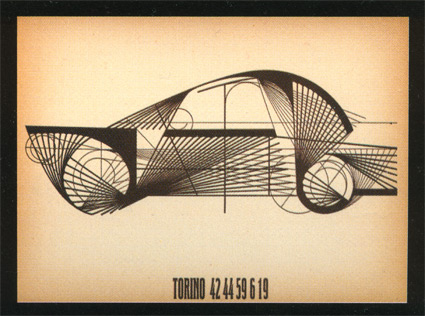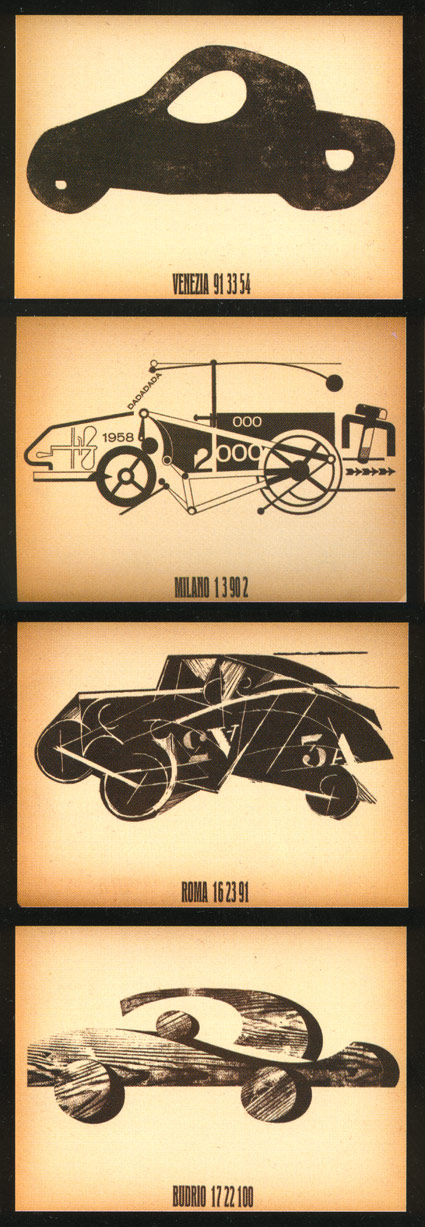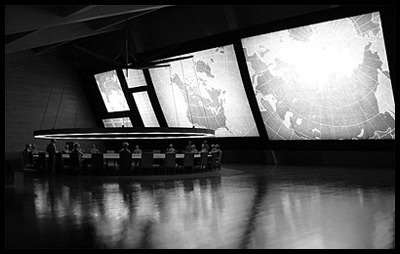Jeanne Moderno in Ponytail
When I drew Jeanne Moderno, my hopes were the fonts would end up somewhere in a cool fashion magazine.
UK-based Ponytail has em and has used them beautifully in their third issue. Website here.
When I drew Jeanne Moderno, my hopes were the fonts would end up somewhere in a cool fashion magazine.
UK-based Ponytail has em and has used them beautifully in their third issue. Website here.

Gernreich’s unisex thong, 1974
Rudi Gernreich (1922-85) invented the world’s first topless swimsuit, the thong and the ‘No-Bra Bra.’
He also designed the clothing on Moonbase Alpha (below). Article and video here. Posthumous MySpace here.

Costume design for Space 1999, 1975
Type note: Space 1999 used Futura and Futura Black for its title sequence.
‘He was in the vanguard of a relatively small group who fervently, indeed religiously, believed in the curative power of good design when applied to all aspects of American life.’ -Steven Heller, Eye Magazine
Alvin Lustig (1915-55) didn’t limit himself to the field of graphic design – as a ‘generalist’ he designed just about everything he could leave his mark on. Including a helicopter.
Check out the incredible collection of book jackets designed by Lustig here. More here.
And for even more, visit the Alvin Lustig Archive.


 Found via Twitter.com/Sandoer
Found via Twitter.com/Sandoer
From Russia: Experimental videos by 22 year old art director Maxim Zhestkov.
More videos here. Website here.
Found via Planetary Fokelore

Series of futuristic drawings by Pino Tovaglia for Alfa Romeo, 1958
I just picked up a used copy of the book Pino Tovaglia. La regola che corregge l’emozione. Book review over at Grain Edit.

Matt Jeffries was the production designer for the original Star Trek, but somewhere along the way designer Thomas Kellogg was brought in to develop the Shuttlecraft Galileo – made famous in the episode The Galileo Seven.
Kellogg became well-known for his design for the Studebaker Avanti Coupe while working under über designer Raymond Loewy. One can see the likeness between the shuttlecraft rendering (above) and the Avanti (below).
And read more about all this here.
Plus
Here’s an interview with Tom Kellogg.
In 1979, the week the first movie premiered, Paramount launched a daily Star Trek comic strip. Thomas Warkentin was the first writer/artist to work on the title and I loved his attention to detail.
The strip adapted the production design of the first motion picture and Warkentin even went so far as to put small details on the viewscreens that was often wasted when printed small in the paper. I had a drawer full of the clipped strips, they’d turned a nice gold color over time.
The strip itself has never been reprinted, lost in a world of legal ownership issues. But the entire run can be found here. Though not in the best user friendly format. There’s also links to some great UK-based Star Trek comics from the 1970s. Handy checklist here.
When Star Trek first became a global sensation, Toru Kanamori landed a gig illustrating Japanese translations of the original series stories. Wouldn’t it be great to reprint a bunch of these in an art book with text from the Blish novels?
You know, I’d love to design something like that. Somebody call me.
For more about the work of Toru Kanamori, jump here.
Somewhere in the limbo that was the 1970s was a never-completed UK-produced film Star Trek: Planet of the Titans.
They made it as far as the conceptual illustrations. Ken Adam was hired as production designer and Star Wars visionary Ralph McQuarrie set about redesigning the Enterprise.

Sir Ken Adam was the production designer for the Bond films.
He also developed the forced perspective look of Dr. Strangelove or: How I Learned to Stop Worrying and Love the Bomb (his War Room made a retro/1960s/1980s appearance in Watchmen). Many of the recent Bond films still reference his work.


The War Room from Dr. Strangelove or: How I Learned to Stop Worrying and Love the Bomb, 1963

‘Transparent plastics and wooden veneers were mixed and colour schemes were limited to tones of pure whites and greys, the only splash of colour being allocated to switches and dials’
Designer Dieter Rams’ work for Braun inspired Jonathan Ive at Apple. And just opened at the London’s Design Museum is a Rams retrospective. Details here.